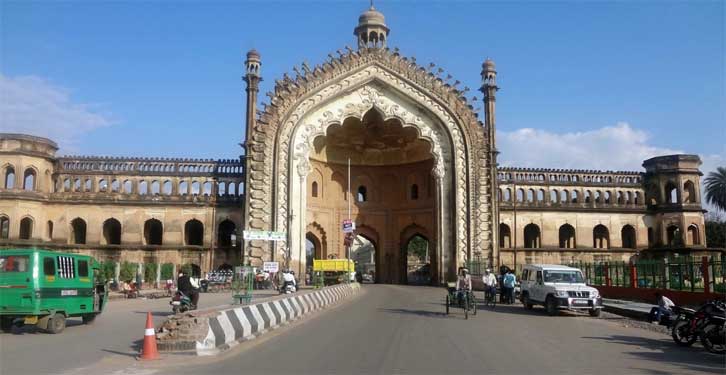Rumi Darwaza TRAVEL GUIDE

Rumi Darwaza is one of the main tourist destinations of Lucknow. This building of Lucknow places its own identity on the world screen. Nawab Asaf-ud-Daula had made Lucknow the center of his sultanate in 1775. This is the signature craft building of the door district of Lucknow. The symbol of Awadh architecture is called this entry Gateway.
History of Rumi Darwaza
In 1784 Nawab Asaf-ud-Daula started making Rumi Darwaza and Imambara. Their construction was completed in 1786. It is said that in the time of his creation, the cost of one crore came.
At the time when the Rumi Darwaza was going on, there was a famine in Awadh, people could get jobs so Asafuddaula made a detailed plan of these buildings.
How to Reach Rumi Darwaza
Being located close to the heart of the city, there is no discomfort in any way coming to the Rumi Darwaza. Rickshaw or taxi, or book railway ticket or any means of vehicle from your home (on the off chance that you do not have any clue about your way) and arrive there without any problem. It is only 5.5 km from Lucknow Junction, which is the nearest railway station.
Time to visit Rumi Darwaza
Opens for 24 hours.
Rumi Darwaza Location
Attractions of Rumi Darwaza
A person named 'Kifayatullah' was created by the architect of the famous Imambara and Rumi Darwaza built by Asaf-ud-Daula. This was the same artisan, who handled the moon-shaped half-mast of the Rumi Darwaza and the brick kiln of Imambara in Ladavatar. Lakhda brick and almond lime have been used in all these buildings. The Rumi Darwaza was built on the copy of an ancient ridge door of Constantinople and that is why it used to call people like Kustunatunya in the 19th century. In his book 'Private Life of the Eastern King', Knighton writes that the entrance to the court of Sultan of Turkey was also of this model and hence, so far, the European historian calls it 'Turkish Gate'. Buildings constructed in Lucknow are not affiliated with any one genre. From the time of Nawab Asaf-ud-Daula, the effects of Gothic art began to appear in buildings. The Rumi Darwaza , which is connected effortlessly to Rome, may be considered as a symbol of foreign origin like the Roman script, its original influence nourishes Indian art.
Hindu-Muslim art
Rumi Darwaza height is 60 feet. An eight-facade canopy is built on top of it, as far as the road to go is concerned. The Rumi Darwaza on the west side is like Tripoliya, whereas it seems to be the Panchmahal from the East. On the two sides of the door there is a three-storeyed ventilated fortress, with eight sides turquoises on which there is no dome. The Rumi Darwaza decoration is unique, in which the combination of Hindu-Muslim art is found. This gate is a conical, whose arches are tilted like a command. The outer arbor has been decorated with Nagaphans, which can be understood as Kamal Dal. Both of these marks are cultural symbols of Awadh Pradesh. Sandal lotus flowers are found in the queue from the middle of the hawthorns. Small umbrellas have been built on Kamalassa on either side of the door. The inside arch is the Shahjahani arches of Mughal tradition. In the decoration of which are made of citadels of craft, on the vertex of its crest, there is a blossomed lotus.
A tradition of art
The Rumi door, built in the 18th century, later became a tradition of building art. Behind this door, there used to be a lot of splendor, in which there were masons of British martyrs who were killed on the front of the fort of Machhi in the jungle freedom of 1857. These British soldiers are the heads of the Sergeant Laurence class and Garner Martin, whose marks are still remaining.
Rumi Darwaza Tour Packages
-

Rumi Darwaza Tour package
© Copyright 2018 Design ByIndia Easy TripAll Rights Reserved

